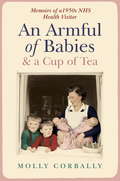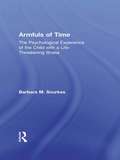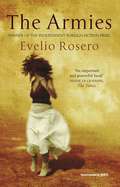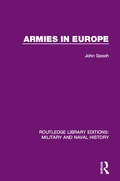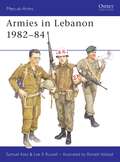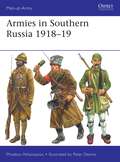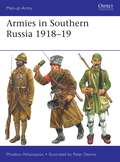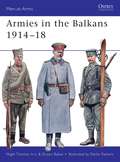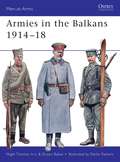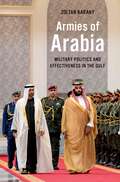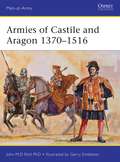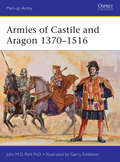- Table View
- List View
Armenia’s Velvet Revolution: Authoritarian Decline and Civil Resistance in a Multipolar World
In April 2018, Armenia experienced a remarkable popular uprising leading to the resignation of Prime Minister Serzh Sargsyan and his replacement by protest leader Nikol Pashinyan. Evoking Czechoslovakia's similarly peaceful overthrow of communism 30 years previously, the uprising came to be known as Armenia's 'Velvet Revolution': a broad-based movement calling for clean government, democracy and economic reform. This volume examines how a popular protest movement, showcasing civil disobedience as a mass strategy for the first time in the post-Soviet space, overcame these unpromising circumstances. Situating the events in Armenia in their national, regional and global contexts, different contributions evaluate the causes driving Armenia's unexpected democratic turn, the reasons for regime vulnerability and the factors mediating a non-violent outcome. Drawing on comparative perspectives with democratic transitions across the world, this book will be essential reading for those interested in the regime dynamics, social movements and contested politics of contemporary Eurasia, as well as policy-makers and practitioners in the fields of democracy assistance and human rights in an increasingly multipolar world.
An Armful of Babies and a Cup of Tea: Memoirs of a 1950s Health Visitor
by Molly CorballyA touching and warm-hearted memoir of a young health visitor in postwar England, for fans of Call the Midwife and The Language of Kindness.After serving as a nurse in WW2, Molly Corbally joined the brand new NHS and became one of the first official District Health Visitors, attending to mothers and babies from all walks of life in the picturesque village near Coventry she came to call home. Social work was uncharted territory at the time, and Britain was very much worse for wear - TB, polio, measles and whooping cough were just some of the hazards new babies faced. Social conditions could also add to the problems, at a time when poverty and alcoholism were rife. Armed with only her nursing training, her common sense and a desire to serve, Molly set out to win over a community and provide a new and valuable service in times of great change. As well as the challenges there was also joy and laughter, from the woman who finally had a baby after fifteen years of trying, to the woman who thought she should use marmalade as nappy cream, because the hospital had never taken the label off the jar they were using to store it.Warm, witty and moving, An Armful of Babies is a vivid portrait of rural England in the post-war years, and a testament to an NHS in its own infancy and to what hasn't changed: the bond between parents and their children, and the importance of protecting that.
Armfuls of Time: The Psychological Experience of the Child with a Life-Threatening Illness
by Barbara M. Sourkes'I just wish I had armfuls of time.' These are the poignant words of a four year old facing a life-threatening illness. Armfuls of Time eloquently portrays the psychological experience of such children, who are irreversibly changed from the moment of diagnosis. Barbara M. Sourkes, Ph.D. describes how she works with these children, using drawings, soft toys and dolls, stories and real medical objects, to allow them to communicate their feelings about the treatment they undergo, their relationship with their families, their experience of the illness and living with the threat of loss. Making extensive use of the words of children, offering astute interpretations and sound practical advice, this is a book that will be welcomed by all those concerned with the care of children with life-threatening illnesses.
Armfuls of Time: The Psychological Experience of the Child with a Life-Threatening Illness
by Barbara M. Sourkes'I just wish I had armfuls of time.' These are the poignant words of a four year old facing a life-threatening illness. Armfuls of Time eloquently portrays the psychological experience of such children, who are irreversibly changed from the moment of diagnosis. Barbara M. Sourkes, Ph.D. describes how she works with these children, using drawings, soft toys and dolls, stories and real medical objects, to allow them to communicate their feelings about the treatment they undergo, their relationship with their families, their experience of the illness and living with the threat of loss. Making extensive use of the words of children, offering astute interpretations and sound practical advice, this is a book that will be welcomed by all those concerned with the care of children with life-threatening illnesses.
The Armies: Winner of the Independent Foreign Fiction Prize
by Evelio RoseroIn a small town in the mountains of Colombia, Ismael, a retired teacher, spends his mornings gathering oranges in the sunshine and spying on his neighbour as she sunbathes naked in her garden.Returning from a walk one morning he discovers that his wife has disappeared. Then more people go missing, and not-so-distant gunfire signals the approach of war. Most of the villagers make their escape, but Ismael cannot leave without his Otilia. He becomes an unwilling witness to the senseless civil war that sweeps through his country with a tragic inevitability. In The Armies Rosero has created a hallucinatory, relentless, captivating narrative often as violent as the events it describes, told by an old man battered by a reality he no longer recognizes.
Armies and Political Change in Britain, 1660-1750
by Hannah SmithArmies and Political Change in Britain, 1660 -1750 argues that armies had a profound impact on the major political events of late seventeenth- and early eighteenth-century Britain. Beginning with the controversial creation of a permanent army to protect the restored Stuart monarchy, this original and important study examines how armies defended or destroyed regimes during the Exclusion Crisis, Monmouth's Rebellion, the Revolution of 1688-1689, and the Jacobite rebellions and plots of the post-1714 period, including the '15 and '45. Hannah Smith explores the political ideas of 'common soldiers' and army officers and analyses their political engagements in a divisive, partisan world. The threat or hope of military intervention into politics preoccupied the era. Would a monarch employ the army to circumvent parliament and annihilate Protestantism? Might the army determine the succession to the throne? Could an ambitious general use armed force to achieve supreme political power? These questions troubled successive generations of men and women as the British army developed into a lasting and costly component of the state, and emerged as a highly successful fighting force during the War of the Spanish Succession. Armies and Political Change in Britain, 1660 - 1750 deploys an innovative periodization to explore significant continuities and developments across the reigns of seven monarchs spanning almost a century. Using a vivid and extensive array of archival, literary, and artistic material, the volume presents a striking new perspective on the political and military history of Britain.
Armies and Political Change in Britain, 1660-1750
by Hannah SmithArmies and Political Change in Britain, 1660 -1750 argues that armies had a profound impact on the major political events of late seventeenth- and early eighteenth-century Britain. Beginning with the controversial creation of a permanent army to protect the restored Stuart monarchy, this original and important study examines how armies defended or destroyed regimes during the Exclusion Crisis, Monmouth's Rebellion, the Revolution of 1688-1689, and the Jacobite rebellions and plots of the post-1714 period, including the '15 and '45. Hannah Smith explores the political ideas of 'common soldiers' and army officers and analyses their political engagements in a divisive, partisan world. The threat or hope of military intervention into politics preoccupied the era. Would a monarch employ the army to circumvent parliament and annihilate Protestantism? Might the army determine the succession to the throne? Could an ambitious general use armed force to achieve supreme political power? These questions troubled successive generations of men and women as the British army developed into a lasting and costly component of the state, and emerged as a highly successful fighting force during the War of the Spanish Succession. Armies and Political Change in Britain, 1660 - 1750 deploys an innovative periodization to explore significant continuities and developments across the reigns of seven monarchs spanning almost a century. Using a vivid and extensive array of archival, literary, and artistic material, the volume presents a striking new perspective on the political and military history of Britain.
Armies and State-building in the Modern Middle East: Politics, Nationalism and Military Reform
by Stephanie CroninThe uprisings of 2011, which erupted so unexpectedly and spread across the Middle East, once again propelled the armies of the region to the centre of the political stage. Throughout the region, the experience of the first decade of the twenty-first century provides ample reason to re-examine Middle Eastern armies and the historical context which produced them. By adding an historical understanding to a contemporary political analysis, Stephanie Cronin examines the structures and activities of Middle Eastern armies and their role in state- and empire-building. Focusing on Iran, Afghanistan and Saudi Arabia, Armies, Tribes and States in the Middle East presents a clear and concise analysis of the nature of armies and the differing guises military reform has taken throughout the region. Covering the region from the birth of modern armies there in the late-nineteenth and early-twentieth centuries, to the military revolutions of the 1950s and 60s and on to the twenty-first century army-building exercises seen in Iraq and Afghanistan, Cronin provides a unique and vital presentation of the role of the military in the modern Middle East.
Armies and State-building in the Modern Middle East: Politics, Nationalism and Military Reform (Library of Modern Middle East Studies)
by Stephanie CroninThe uprisings of 2011, which erupted so unexpectedly and spread across the Middle East, once again propelled the armies of the region to the centre of the political stage. Throughout the region, the experience of the first decade of the twenty-first century provides ample reason to re-examine Middle Eastern armies and the historical context which produced them. By adding an historical understanding to a contemporary political analysis, Stephanie Cronin examines the structures and activities of Middle Eastern armies and their role in state- and empire-building. Focusing on Iran, Afghanistan and Saudi Arabia, Armies, Tribes and States in the Middle East presents a clear and concise analysis of the nature of armies and the differing guises military reform has taken throughout the region. Covering the region from the birth of modern armies there in the late-nineteenth and early-twentieth centuries, to the military revolutions of the 1950s and 60s and on to the twenty-first century army-building exercises seen in Iraq and Afghanistan, Cronin provides a unique and vital presentation of the role of the military in the modern Middle East.
Armies in Europe (Routledge Library Editions: Military and Naval History)
by John GoochThis book, originally published in 1980, is a study of the nature and purposes of peace-time military organization in Europe, and of the characteristics and outcome of the major wars fought during these years. It charts the rise of mass armies and the role of conscription as a socializing agent and a military instrument, as well as discussing the growing involvement of society in war both as agent and target of military activity, the mounting effort required of a society in order to ahcieve victory, culminating in the ‘Total War’ of 1939-45. Among other subjects explored are the development of war economies, the genesis and significance of war aims, the importance of social cohesion in modern war and the impact of technology.
Armies in Europe (Routledge Library Editions: Military and Naval History)
by John GoochThis book, originally published in 1980, is a study of the nature and purposes of peace-time military organization in Europe, and of the characteristics and outcome of the major wars fought during these years. It charts the rise of mass armies and the role of conscription as a socializing agent and a military instrument, as well as discussing the growing involvement of society in war both as agent and target of military activity, the mounting effort required of a society in order to ahcieve victory, culminating in the ‘Total War’ of 1939-45. Among other subjects explored are the development of war economies, the genesis and significance of war aims, the importance of social cohesion in modern war and the impact of technology.
Armies in Lebanon 1982–84 (Men-at-Arms)
by Ronald Volstad Sam Katz Lee E RussellThe Lebanese Civil War of 1975-76 caused 80,000 dead and totally split the country along factional lines. An estimated 50 different militias came into existence, and acts of violence were both individual and collective. In the midst of this explosive atmosphere, cross-border conflict between Israel and Lebanon intensified, culminating in Operation Peace for Galilee the invasion of Lebanon. This book offers a day-by-day account of the invasion and the subsequent siege of Beirut, an operation that resulted in both the PLO and Israel claiming victory. Numerous photographs and colour plates portray the uniforms and equipment of the Israeli, Palestinian and Multi-National forces.
Armies in Lebanon 1982–84 (Men-at-Arms)
by Ronald Volstad Sam Katz Lee E RussellThe Lebanese Civil War of 1975-76 caused 80,000 dead and totally split the country along factional lines. An estimated 50 different militias came into existence, and acts of violence were both individual and collective. In the midst of this explosive atmosphere, cross-border conflict between Israel and Lebanon intensified, culminating in Operation Peace for Galilee the invasion of Lebanon. This book offers a day-by-day account of the invasion and the subsequent siege of Beirut, an operation that resulted in both the PLO and Israel claiming victory. Numerous photographs and colour plates portray the uniforms and equipment of the Israeli, Palestinian and Multi-National forces.
Armies in Revolution (Routledge Library Editions: Revolution #1)
by John EllisThis book, first published in 1973, examines seven revolutionary armies ranging from Cromwell’s New Model Army to the Red Army of Mao Zedong. In each case it examines the mobilisation and organisation of the army, and the need to balance political ideals and aspirations with military cohesion and discipline, and social stability. This book is an outstanding example of a study of the relationship between the military and society, and shows that no revolution can succeed without an organised army and that few such armies can tolerate for long the ideology that created them.
Armies in Revolution (Routledge Library Editions: Revolution #1)
by John EllisThis book, first published in 1973, examines seven revolutionary armies ranging from Cromwell’s New Model Army to the Red Army of Mao Zedong. In each case it examines the mobilisation and organisation of the army, and the need to balance political ideals and aspirations with military cohesion and discipline, and social stability. This book is an outstanding example of a study of the relationship between the military and society, and shows that no revolution can succeed without an organised army and that few such armies can tolerate for long the ideology that created them.
Armies in Southern Russia 1918–19 (Men-at-Arms)
by Phoebus AthanassiouAn important aspect of the Russian Civil War were the several Allied expeditions immediately following World War I in support of the disunited Russian 'White' armies resisting the Bolshevik Revolution. Although they ended in failure, these ventures were long resented, and were the origin of the 70-year-long Soviet suspicion of the Western Allies. British and US expeditionary forces operated in North Russia and Siberia in support of General Yudenich and Admiral Kolchak respectively, and a French and Greek expeditionary force (plus Romanian and Polish elements) operated in Crimea and south-western Ukraine, in support of General Denikin. The situation was further complicated by the presence of strong Imperial German elements still under arms, and by war between various factions in the Ukraine. This Southern theatre of the Allied interventions is far less well known than that of the British and Americans in the North and East.Featuring rare photos and new colour plates, this fascinating new book describes this major Allied intervention in the Russian Civil War. Dr Phoebus Athanassiou writes a compelling account of how the French and Greeks alongside White Russians were greatly outnumbered by pro-Bolshevik forces and were relentlessly pushed back by the Ukrainian forces. In just over 4 months, on 28 April 1919, the last of their forces were evacuated by Allied navies from Sevastopol in Crimea.
Armies in Southern Russia 1918–19 (Men-at-Arms #540)
by Phoebus AthanassiouAn important aspect of the Russian Civil War were the several Allied expeditions immediately following World War I in support of the disunited Russian 'White' armies resisting the Bolshevik Revolution. Although they ended in failure, these ventures were long resented, and were the origin of the 70-year-long Soviet suspicion of the Western Allies. British and US expeditionary forces operated in North Russia and Siberia in support of General Yudenich and Admiral Kolchak respectively, and a French and Greek expeditionary force (plus Romanian and Polish elements) operated in Crimea and south-western Ukraine, in support of General Denikin. The situation was further complicated by the presence of strong Imperial German elements still under arms, and by war between various factions in the Ukraine. This Southern theatre of the Allied interventions is far less well known than that of the British and Americans in the North and East.Featuring rare photos and new colour plates, this fascinating new book describes this major Allied intervention in the Russian Civil War. Dr Phoebus Athanassiou writes a compelling account of how the French and Greeks alongside White Russians were greatly outnumbered by pro-Bolshevik forces and were relentlessly pushed back by the Ukrainian forces. In just over 4 months, on 28 April 1919, the last of their forces were evacuated by Allied navies from Sevastopol in Crimea.
Armies in the Balkans 1914–18 (Men-at-Arms)
by Nigel Thomas Darko Pavlovic Dusan BabacRecent history should remind us that it was events in the Balkans which sparked off the Great War, with the assassination of the Austrian heir Prince Franz Ferdinand in Sarajevo, and the consequent invasion of Serbia by Austro-Hungarian armies on 2 August 1914. Nevertheless, the subsequent four-year war in that theatre is always overshadowed by the simultaneous campaigns on the Western Front. For the first time this book offers a concise account of these complex campaigns, the organisation, orders of battle, and the uniforms and insignia of the armies involved: Austro-Hungarian, German, Ottoman, Serbian, Montenegrin, Albanian, British, French, Italian, Russian, Bulgarian, Greek and Rumanian.
Armies in the Balkans 1914–18 (Men-at-Arms #356)
by Nigel Thomas Darko Pavlovic Dusan BabacRecent history should remind us that it was events in the Balkans which sparked off the Great War, with the assassination of the Austrian heir Prince Franz Ferdinand in Sarajevo, and the consequent invasion of Serbia by Austro-Hungarian armies on 2 August 1914. Nevertheless, the subsequent four-year war in that theatre is always overshadowed by the simultaneous campaigns on the Western Front. For the first time this book offers a concise account of these complex campaigns, the organisation, orders of battle, and the uniforms and insignia of the armies involved: Austro-Hungarian, German, Ottoman, Serbian, Montenegrin, Albanian, British, French, Italian, Russian, Bulgarian, Greek and Rumanian.
Armies of Arabia: Military Politics and Effectiveness in the Gulf
by Zoltan BaranyArmies of Arabia is the first comprehensive analysis of the Gulf monarchies' armed forces, including their political, social, and economic characteristics, foreign relations, and battleground performance. The Arabian Peninsula is among the most strategically and economically important areas in the world, but its militaries remain terra incognita. In Armies of Arabia - the first book to comprehensively analyze the Gulf monarchies' armed forces - Zoltan Barany explains their notorious ineffectiveness with a combination of political-structural and sociocultural factors. Drawing on over 150 interviews and meticulous multidisciplinary research, Barany paints a fascinating portrait of Arabia's armies from Ibn Saud's Ikhwan to the present. He explores the methods ruling families employ to ensure their armies' loyalty, examines the backgrounds and career trajectories of soldiers and officers, and explains the monarchies' reliance on mercenaries and the enduring importance of tribal networks. Even though no other world region spends more on security, Arabia's armies remain ineffective because of an absence of meritocracy, the domination of personal connections over institutional norms, insipid leadership, a casual work ethic, and training that lacks intensity, frequency, and up-to-date scenarios. Massive weapons acquisitions are primarily pay-offs to the US for protecting them and have resulted in bloated and inappropriate arsenals and large-scale corruption. Barany explains why the Gulf Cooperation Council has been a squandered opportunity and examines the kingdoms' military relationships with the Arab world and beyond. The performance of the Saudi-led coalition's disastrous war in Yemen starkly illustrates the Gulf armies' humiliating combat record. The book concludes with thoughts on waste (of human potential, resources, institutions) as a dominant theme of Gulf military affairs, considers likely changes in response to long-term weakening demand for oil, and suggests ways in which the armies' effectiveness could be raised. Chock-full of insights and stories from the field and written with a general audience in mind, Armies of Arabia will be essential reading for anyone interested in military affairs and Middle Eastern politics, society, and international relations.
Armies of Arabia: Military Politics and Effectiveness in the Gulf
by Zoltan BaranyArmies of Arabia is the first comprehensive analysis of the Gulf monarchies' armed forces, including their political, social, and economic characteristics, foreign relations, and battleground performance. The Arabian Peninsula is among the most strategically and economically important areas in the world, but its militaries remain terra incognita. In Armies of Arabia - the first book to comprehensively analyze the Gulf monarchies' armed forces - Zoltan Barany explains their notorious ineffectiveness with a combination of political-structural and sociocultural factors. Drawing on over 150 interviews and meticulous multidisciplinary research, Barany paints a fascinating portrait of Arabia's armies from Ibn Saud's Ikhwan to the present. He explores the methods ruling families employ to ensure their armies' loyalty, examines the backgrounds and career trajectories of soldiers and officers, and explains the monarchies' reliance on mercenaries and the enduring importance of tribal networks. Even though no other world region spends more on security, Arabia's armies remain ineffective because of an absence of meritocracy, the domination of personal connections over institutional norms, insipid leadership, a casual work ethic, and training that lacks intensity, frequency, and up-to-date scenarios. Massive weapons acquisitions are primarily pay-offs to the US for protecting them and have resulted in bloated and inappropriate arsenals and large-scale corruption. Barany explains why the Gulf Cooperation Council has been a squandered opportunity and examines the kingdoms' military relationships with the Arab world and beyond. The performance of the Saudi-led coalition's disastrous war in Yemen starkly illustrates the Gulf armies' humiliating combat record. The book concludes with thoughts on waste (of human potential, resources, institutions) as a dominant theme of Gulf military affairs, considers likely changes in response to long-term weakening demand for oil, and suggests ways in which the armies' effectiveness could be raised. Chock-full of insights and stories from the field and written with a general audience in mind, Armies of Arabia will be essential reading for anyone interested in military affairs and Middle Eastern politics, society, and international relations.
Armies of Castile and Aragon 1370–1516 (Men-at-Arms)
by Gerry Embleton John PohlMost studies of medieval warfare in the late 14th and 15th centuries concentrate on the Hundred Years' War between England and France and the Wars of the Roses. But meanwhile, on the Iberian peninsula, the foundations of Spain's military 'Golden Age' were being laid as the kingdoms of Castile and Aragon under the Trastamara dynasty grew in power, ambition and success. Featuring spectacular full-colour artwork, and rare manuscript illustrations, this book depicts the fighting men whose skill and tactical flexibility made Spain into a world power at the close of the Middle Ages, carving out empires from the Mediterranean to the Caribbean.
Armies of Castile and Aragon 1370–1516 (Men-at-Arms #500)
by Gerry Embleton John PohlMost studies of medieval warfare in the late 14th and 15th centuries concentrate on the Hundred Years' War between England and France and the Wars of the Roses. But meanwhile, on the Iberian peninsula, the foundations of Spain's military 'Golden Age' were being laid as the kingdoms of Castile and Aragon under the Trastamara dynasty grew in power, ambition and success. Featuring spectacular full-colour artwork, and rare manuscript illustrations, this book depicts the fighting men whose skill and tactical flexibility made Spain into a world power at the close of the Middle Ages, carving out empires from the Mediterranean to the Caribbean.
The Armies of Daylight: The Time Of The Dark, The Walls Of Air, And The Armies Of Daylight (Darwath Trilogy #3)
by Barbara HamblyA whirlwind fantasy classic set in the richest world imaginable, with unforgettable characters and the highest stakes – The Armies of Daylight is the third and final book in Barbara Hambly’s epic Darwath Trilogy.
Armies of Deliverance: A New History of the Civil War
by Elizabeth R. VaronLoyal Americans marched off to war in 1861 not to conquer the South but to liberate it. So argues Elizabeth R. Varon in Armies of Deliverance, a sweeping narrative of the Civil War and a bold new interpretation of Union and Confederate war aims. Northerners imagined the war as a crusade to deliver the Southern masses from slaveholder domination and to bring democracy, prosperity, and education to the region. As the war escalated, Lincoln and his allies built the case that emancipation would secure military victory and benefit the North and South alike. The theme of deliverance was essential in mobilizing a Unionist coalition of Northerners and anti-Confederate Southerners. Confederates, fighting to establish an independent slaveholding republic, were determined to preempt, discredit, and silence Yankee appeals to the Southern masses. In their quest for political unity Confederates relentlessly played up two themes: Northern barbarity and Southern victimization. Casting the Union army as ruthless conquerors, Confederates argued that the emancipation of blacks was synonymous with the subjugation of the white South. Interweaving military and social history, Varon shows that everyday acts on the ground--from the flight of slaves, to protests against the draft, the plundering of civilian homes, and civilian defiance of military occupation--reverberated at the highest levels of government. Varon also offers new perspectives on major battles, illuminating how soldiers and civilians alike coped with the physical and emotional toll of the war as it grew into a massive humanitarian crisis. The Union's politics of deliverance helped it to win the war. But such appeals failed to convince Confederates to accept peace on the victor's terms, ultimately sowing the seeds of postwar discord. Armies of Deliverance offers innovative insights on the conflict for those steeped in Civil War history and novices alike.

